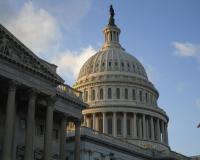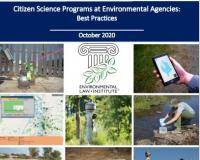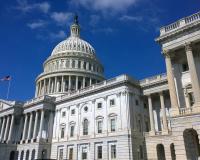
Vibrant Environment
All | Biodiversity | Climate Change and Sustainability | Environmental Justice | Governance and Rule of Law | Land Use and Natural Resources | Oceans and Coasts | Pollution Control

An incoming administration stocked with veterans of prior government service is uniquely suited to appreciate the central role of administrative law in American governance. But the day-one actions of the Biden Administration put an exclamation point on this observation.

President Donald Trump’s policies appear to be at odds with the environmental justice (EJ) movement, but little work has been done to test their true impact. Trump proposed or completed rollbacks of nearly 100 environmental regulations, repeatedly rejected calls for action on climate change, and continuously sought to cut funding for the U.S. Environmental Protection Agency, including for environmental justice. These regressive policies seem likely to harm poor and minority communities most, especially following what many saw as promising progress under President Barack Obama. But how are these policy changes actually impacting the cause of EJ? How can we assess actual progress toward EJ’s multifaceted goals?

The Mississippi River Delta and Louisiana coastline are disappearing. Since the late 1920s, efforts to control the Mississippi through levees and dams have impeded its natural ability to deposit sediment downstream, contributing to large-scale land loss. It’s estimated that Louisiana’s coastal parishes lost roughly two thousand square miles of land between 1932 and 2016. As rising seas driven by climate change threaten to further consume the Gulf coast, there is an imperative to address the growing problem of shrinking landmass. Confronting this threat with a sense of urgency will allow for preservation of Louisiana’s communities, economies, and cultural resources into the future.

Environmental agencies are increasingly transforming their approach to citizen science, from viewing it as a source of data primarily for education and awareness to a potential source of concrete value for their programs. Although this relationship has existed for some time, the emergence of new technologies, an increasingly aware public, and the rise of unexpected pollution events has reinvigorated the way agencies and the public work together.

As we are moving from an aggressively deregulatory period to one in which regulation is more likely to be seen as important in advancing environmental policy, let’s take a quick look at what to anticipate from the three branches of the federal government.

National Environmental Policy Act (NEPA) administration is in a serious tangle, given new Trump Administration regulations, the long-standing procedures administered by scores of federal agencies, and inconsistent environmental review obligations depending on various dates. This knot, like the legendary knot of King Gordias, is not easily unraveled. But it is not impossible.
Advancing Human Rights-Based Approaches and Conflict Sensitivity in Forest Monitoring and Management

Harbouring the vast majority of life on Earth, forests are a vital natural resource that provide ecosystem services essential for life and livelihoods. Forests are sources of important raw materials such as timber, wood fuel, and non-timber-forest products. However, competition to access forests, like many natural resources, is often a motive for human conflict. The United Nations Environment Programme (UNEP) estimates that in the last 60 years, at least 40 percent of all intrastate conflicts have had a link to natural resources.

In observing the U.S. Environmental Protection Agency’s 50th anniversary, I have a few early-days reflections. I had my first brush with EPA while in law school, when I drafted South Carolina’s Resource Conservation and Recovery Act Interim Status and Part B regulations. “Drafting” is somewhat generous, as my work was primarily cutting and pasting the EPA rules that were set up to apply in the absence of state program authorization and conforming them, and their corresponding preambles, to the South Carolina context. But it was a meaningful baptism into the complexity of EPA’s work within the labyrinth that is the Federal Register. In my last year of law school, I was accepted under the honors program at the U.S. Department of Justice, and was soon off to work as a trial attorney in their Environmental Enforcement Section. My primary client? EPA.

Earlier this year, the Environmental Law Institute hosted a webinar on cultural fire management—just prior to yet another devastating fire season across the West Coast of the United States. The discussion highlighted the millennia of Indigenous peoples’ sustainable forest management practices, drawing a sharp contrast with the consequences of over a century of federal fire-suppression policy, now exacerbated by climate change. That discussion now prompts a deeper conversation about options available to Indigenous tribes for regaining their stewardship role over forest resources on their traditional lands.

The principles of climate justice state that those who are least responsible for greenhouse gas emissions, both globally and in the United States, are the ones most affected by the adverse effects of climate change. In this month’s issue of ELR—The Environmental Law Reporter, environmental justice pioneer Barry Hill examines a variety of legal doctrines that states can use to litigate fossil fuel companies to address climate injustices, using Rhode Island v. Chevron Corp. as a model.